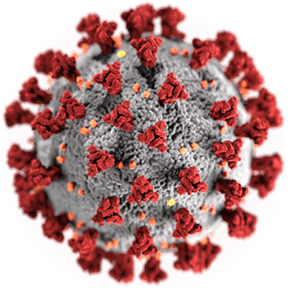Winning an asymmetric war

Commenting on the lessons of the Vietnam War, former Secretary of State Henry Kissinger said “we lost sight of one of the cardinal maxims of guerilla war: the guerrilla wins if he does not lose. The conventional army loses if it does not win.” Kissinger was speaking about the perils of what we now call “asymmetric warfare,” which is defined as “warfare in which opposing groups or nations have unequal military resources, and the weaker opponent uses unconventional weapons and tactics . . . to exploit the vulnerabilities of the enemy.” Guerrilla (“little war”) tactics, terrorism, and insurgency are all modern examples of asymmetric warfare, where weaker forces spread through independent cells like a virus to prevent victory by conventional forces.
There have always been both Davids and Goliaths. The Goliaths just got bigger. With different arms, asymmetric opponents often have different ends as well. Sometimes survival is all that counts.
The United States is well-equipped to counter invasion or attack by the most fearsome forces on earth. We employ the most powerful fighting force the world has ever seen. We have even gotten much better and preventing terrorist strikes and fighting guerilla-type wars. But in 2020 America joined the rest of the world in fighting perhaps the most asymmetric war of all time.
A microscopic virus called COVID-19 has invaded the entire planet. Pandemics are nothing new, and humans have conquered them before, including diseases far more deadly than COVID. This time, though, we have even greater superiority — on paper at least. We have the best health-care professionals and medicine ever, the most advanced technology, and the ability to share information everywhere almost instantaneously. We are cleaner, healthier, and smarter, too.
On top of our medical advantages, computers and the internet also allow us to shelter in ways that would have been unthinkable just decades earlier. By the numbers, we have the upper hand against COVID. And yet, victory remains as elusive as it does undefined. Like a terrorist cell, COVID personified has a singular goal: survive and multiply.
Despite our knowledge and ability, we battle an invisible, mindless foe with an almost infinite supply of expendable troops. Moreover, we supply all the weapons it needs. It co-opts strangers, friends, and loved ones to deliver its payload. It then turns our sanctuaries into battlefields: home, office, playground, house of worship, school, and stores. In part, fighting back means surrendering. Even retreat brings on more crises.
In recent days, COVID succeeded where America’s most powerful enemies (past and present) have not: penetrating the American president’s security and hitting its target. Not since the Civil War has our president been so close to the line of fire in combat. In the summer of 1864, Confederates invaded Washington D.C., and a young Union soldier named Oliver Wendell Holmes Jr. had to yell at President Lincoln to get down from the top of Fort Stevens as enemy sharpshooters took aim at his head. 166 years later, COVID bombarded President Trump.
At home here in Nevada, COVID pulled off a surprise attack of its own, infecting Caleb Cage, Nevada’s COVID-19 response director. As a West Point graduate, a captain in the army with two tours in Iraq under his belt, and the former director of Emergency Management for Governor Sandoval, Caleb is no stranger to emergencies. He has handled war, fire, floods, mass shootings, and riots. We are lucky to have him, and since his appointment in late March, he has been on the front lines of the COVID fight, so risk of exposure was always great. But even now, with all his knowledge and experience, he has no idea where or how he was infected. Fortunately, Caleb had a mild case and he is back on the job. But there is something spooky about the randomness of the virus. Such is the nature of asymmetric warfare.
Caleb is also an example of what makes the task ahead of us so difficult. We do not have the luxury of safeguarding our essential resources in the rear. The people we rely on most are also in the greatest jeopardy. Like Star Trek’s Starfleet of the future, company COVID policy seems to mandate sending the most essential human resources on the most dangerous missions. Doctors, nurses, paramedics, truck drivers, food workers, and more — all of them keep us going. We cannot afford to lose them, nor can we afford for them to stay on the sidelines either. Lawyers like me can call a timeout and the world goes on. Not so for first responders or the workers at the local grocery store.
Like everyone in this battle, Caleb and other state and local leaders have been operating without a playbook. The balancing act between safety and almost everything else is nearly impossible. How we can and should have responded to COVID is a question far above my pay grade. It seems like countries and communities have tried many different things only to see victories turn into set-backs. Shutdowns and closures have likely saved lives, but they have also imposed tremendous costs as well in the form of economic catastrophe, educational set-backs, and serious deficiencies in quality of life.
Asymmetric warfare has defeated superpowers, and viruses have brought down empires before. But we are still the heavy favorite in this fight as long as we recognize it for what it is. Conventional thinking won’t work. We must be flexible and adaptable. We need to be resolute as well. Souring public opinion and collective exhaustion are often the insurgent’s most effective tools.
Our efforts in asymmetric warfare have taught us that superior technology and modern science alone will not bring quick wins. It is going to take a unified national effort and full commitment from all of us to finally put this virus behind us. All of us have had to do difficult, improbable things over the last seven months. But we cannot give up or give in to fear. Just because success against COVID is hard to measure does not mean victory cannot be had. We are in the fight of our lives, for each other, for the future, and for any semblance of a return to normalcy. But we will not win until we win.
Daniel H. Stewart is a fifth-generation Nevadan and a partner with Hutchison & Steffen. He was Gov. Brian Sandoval’s general counsel and has represented various GOP elected officials and groups. He recently switched his registration to nonpartisan.
